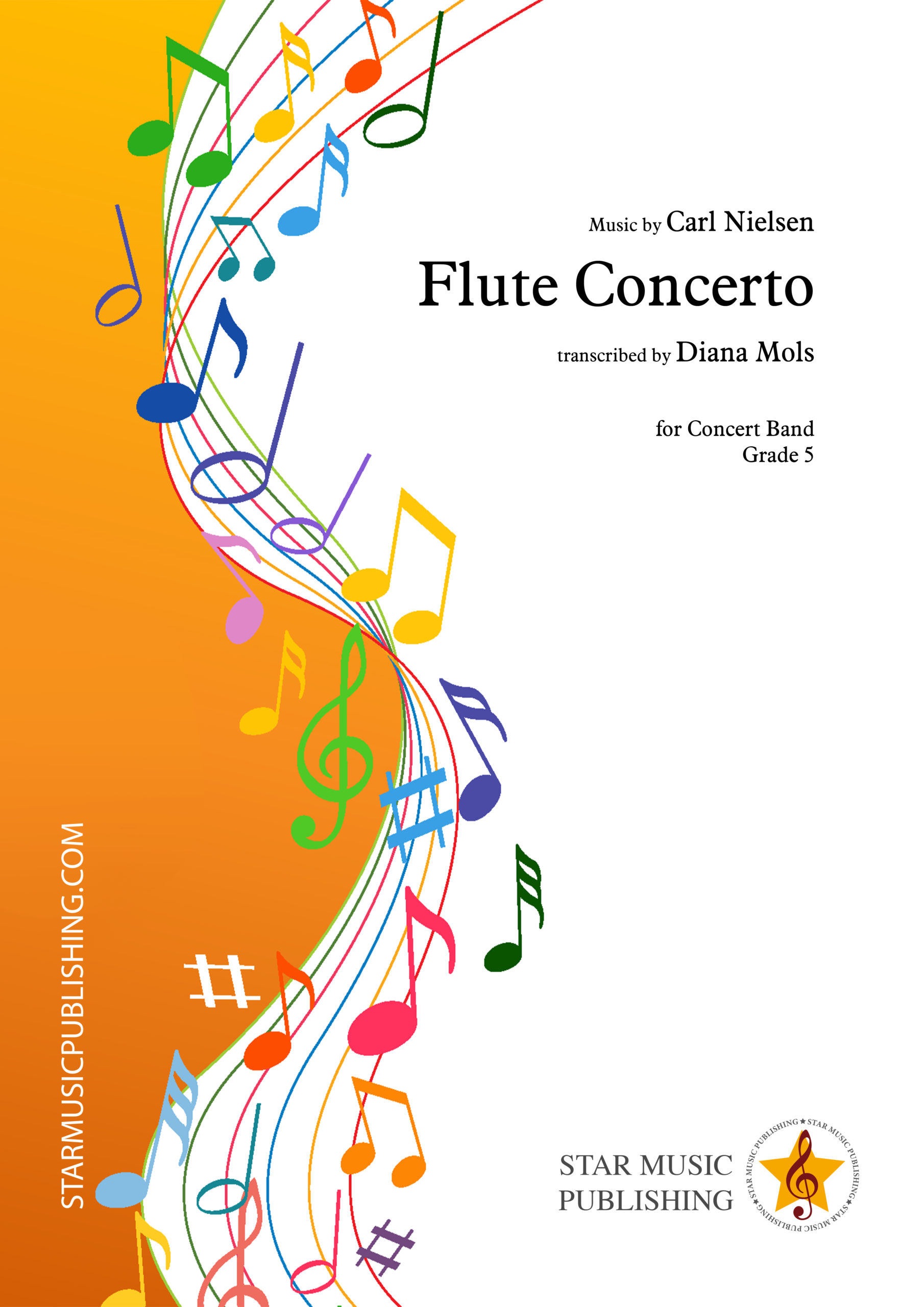Flute Concerto
| Composer | Nielsen, Carl |
|---|---|
| Arranger | Mols, Diana |
| Instumentation | Concert Band/ With Soloist(s) |
| Grade | 5 |
| Duration | 20:00 |
| Genre | Classical Transcriptions/ Concert Music/ Solo Works |
| Included Parts | |
| Format | DIN A3 |
| Article | SMP-10-0062 |
- Description
Beschreibung
Carl Nielsen‘s Concerto for Flute and orchestra (D.F.119) was written in 1926 for Gilbert Jespersen, who succeeded Paul Hagemann as flautist of the Copenhagen Wind quintet. The concerto, in two movements, was generally well received at its premiere in Paris in October 1926 where Nielsen had introduced a temporary ending. The first complete version was played in Copenhagen the following January. The flute concerto has now become part of the international repertoire.
Nielsen began work on the flute concerto while travelling in Germany and Italy in August 1926, intending it to be performed in Paris at a concert devoted to four of his works on 21 October. Unfortunately, as a result of a prolonged stomach complaint, he did not complete the work in time and had to introduce a temporary ending for its Paris premiere.
With his son-in-law, Emil Telmányi conducting, the work was positively received at its premiere in Paris at the Maison Gaveau on 21 October 1926, with the Orchestre de la Société des Concerts du Conservatoire. The reviews were generally positive. Paul Le Flem wrote in Comoedia: “The Concerto for flute and orchestra, outstandingly performed by M. Holger-Gilbert Jespersen, is the most recent work by Mr Nielsen. It has piquancy, drive and does not lack humour.” But Jan Meyerheim, writing in the Paris Telegram did not agree: “The Concerto for flute, well played by M. Jespersen, I did not care for at all; it was beyond my comprehension.”
An advance from the rather traditional style of Nielsen’s Violin Concerto, it reflects the modernistic trends of the 1920’s and lacks tonal stability. The 11-minute Allegro moderato first movement varies between D minor, E-flat minor and F major. Solo passages, dialogues between solo flute and orchestra, and a clarinet and bassoon conversation characterize the music. After an unexpected trombone disruption, the flute comes to the fore with a cantabile theme in E major. An orchestral cadenza leads back into the opening themes before terminating calmly in a key approximating G flat major.
Nielsen describes the opening of the 7-minute second movement as having “a little nastiness in some notes cast forth by the orchestra, but the atmosphere quickly relaxes again, and, when the solo flute enters, it does so with childish innocence.” The movement’s melodious start fluctuates between Allegretto and Adagio before settling into a Tempo di Marcia variation on the melodic opening. The trombone introduces a final series of playful slides, bringing the work to an end.


